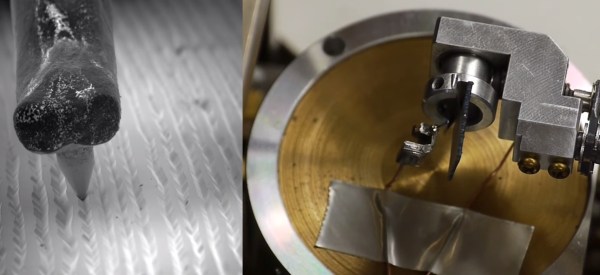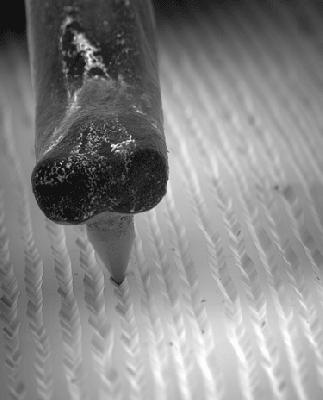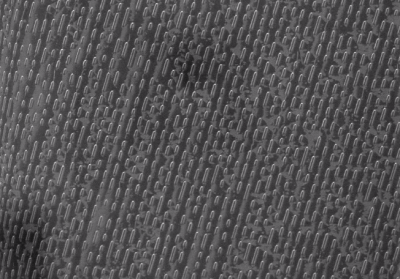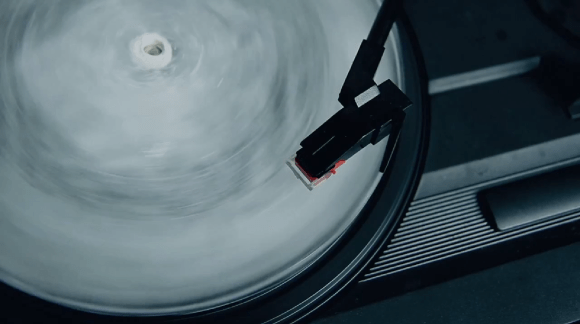If at first you don’t succeed, try, try, and try again. This is especially true when your efforts involve a salvaged record player, a laser cutter, and He-Man. Taking that advice to heart, maniac maker extraordinaire [William Osman] managed to literally burn music onto a CD.
Considering the viability of laser-cut records is dubious — especially when jerry-built — it took a couple frustrating tests to finally see results, all the while risking his laser’s lens. Eventually, [Osman]’s perseverance paid off. The lens is loosely held by a piece of delrin, which is itself touching a speaker blaring music. The vibrations of the speaker cause the lens to oscillate the focal point of the laser into a wavelength that is able to be played on a record player. You don’t get much of the high-end on the audio and the static almost drowns out the music, but it is most definitely a really shoddy record of a song!
Vinyl aficionados are certainly pulling their hair out at this point. For the rest of us, if you read [Jenny’s] primer on record players you’ll recognize that a preamplifier (the ‘phono’ input on your amp) is what’s missing from this setup and would surely yield more audible results.




 . Vinyl is an insulator. [Ben] dealt with this by using his vacuum chamber to evaporate a thin layer of silver on the vinyl.
. Vinyl is an insulator. [Ben] dealt with this by using his vacuum chamber to evaporate a thin layer of silver on the vinyl. [Ben] wasn’t done though. He checked out a few other recording formats, including CD and DVD optical media, and
[Ben] wasn’t done though. He checked out a few other recording formats, including CD and DVD optical media, and 













